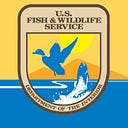Love Birds? Thank Harriet Hemenway
You may not be familiar with Harriet Hemenway, but she played a vital role in enabling you to enjoy the simple joy of having birds all around you.
By the late 1800s, the demand for feathers and bird parts took over the millinery (hat making) industry as women wore ever more outrageous forms on their head. One woman sported a hat containing parts from 3,000 Brazilian hummingbirds.
The lucrative feather trade drove many North American birds to the brink of extinction as they were killed by the millions for their showy breeding plumage to meet demand from New York to London to Paris. Networks of hunters were hired to supply bird skins and feathers from across the British Empire. More than 60 bird species globally were threatened with extinction.
Feather hunters especially targeted egret rookeries during the breeding season, leaving behind the skinned carcasses of adults and chicks left to die of starvation. The volume of the harvest was astonishing — one 1902 record from a London auction house showed sales of 48,240 ounces of plumes, which would have required the feathers of nearly 200,000 egrets, not counting the chicks and eggs destroyed. Countless millions of birds were killed.
Enter Our Heroine
Hemenway, from a well-known Massachusetts family, loved the outdoors. She became known for going bird watching wearing unfashionable white sneakers. At the time, this was quite the talk around town.
In an 1896 article, William Hornaday with the New York Zoological Society wrote: “It was a common thing for a rookery of several hundred birds to be attacked by the plume hunters, and in two or three days utterly destroyed.”
Taking Action
After reading Hornaday’s article, Hemenway reached out to her cousin Minna Hall, and they hosted a series of ladies’ tea parties to discuss the topic.
Remember, this was still 24 years before women had the right to vote. Women could not do anything as simple as rent public spaces for meetings. They were excluded from male clubs and were absent from professional societies and universities.
So they used tea parties as their forum, and used the Blue Book, a directory of Boston’s elite, to create a strategic plan to persuade their influential friends to stop wearing feathered hats. Some women did not want to participate, but many women agreed and signed on to the boycott. By her strategic approach to attracting allies and building partnerships, Hemenway eventually organized a group of 900 wealthy, high-profile women in Boston who agreed to boycott feathers.
The movement continued to grow, but Hemenway and Hall knew that they needed the support, attention and leadership of men to make a difference. After all, the plumage trade, fashion industry, millinery trade magazines and feather warehouses were all run by men. The majority of female consumers had no earning power and were encouraged by men to wear these fashionable hats as a status symbol. Hemenway and Hall targeted established male Boston bird experts to join their cause, which helped establish the credibility of their organization, and that is how the Massachusetts Audubon Society was formed.
The Massachusetts Audubon Society (today referred to as Mass Audubon) organized fund raisers, orchestrated lecture tours on conservation and even audited the millinery industry. By 1897, there were 111 local Audubon chapters in Massachusetts, 105 of them founded and led by women.
What was known as the “bird-hat” campaign of the Audubon Society in Boston spread to Congress and influenced passage of the Lacey Act in 1900. The Act prohibited interstate commerce of protected species taken in violation of state laws. Unfortunately, the law alone did not effectively slow commerce in feathers.
At the urging of Audubon groups, President Theodore Roosevelt named Pelican Island the first Federal Bird Reservation in 1903. Roosevelt went on to name nine more bird reservations in Florida and a total of 55 bird reservations and national game preserves, which eventually became the National Wildlife Refuge System we know and love today.
But advocacy and awareness did not stop the plume trade.
In 1913, the Weeks-McLean Law passed. It prohibited spring shooting, night shooting and interstate sale of wild game. It became the model legislation for the landmark Migratory Bird Treaty Act of 1918.
The sale of migratory birds became illegal and commercial hunting ended, effectively ending the plume trade by the end of World War I.
A Legacy
The story of migratory birds runs from extinction and loss into a proud conservation legacy. That legacy is a network of protected areas and a system of laws, scientific monitoring and international cooperation that is the gold standard for wildlife conservation across the globe.
The bird conservation movement started by Hemenway continues to thrive today, extending from Mass Audubon to hundreds of local, regional, and national bird conservation groups.
More importantly, every day you go outside, whether you realize it or not, there are birds all around you. You may not see them or hear them; we take them for granted as they flit about. But they are there, in cities and marshes and farm fields and forests. Hummingbirds come to backyard feeders to drink nectar as we gaze with appreciation. Millions of Americans celebrate the arrival of migratory flocks of birds around the country at bird festivals and other nature events. And egrets raise their young safely in rookeries in the wild, populations recovered, for all of us to enjoy.
You can thank Harriet Hemenway for that.
